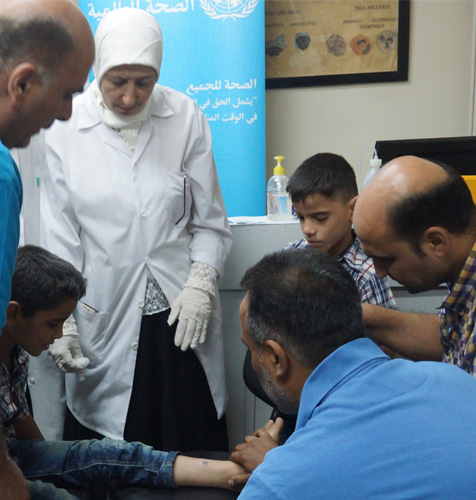Cutaneous leishmaniasis (CL) is endemic in Syria. This parasitic disease is caused by protozoa of the genus Leishmania, transmitted by the bites of sandflies. Transmission of the disease occurs during the sandfly season from May to September each year, but the lesions only begin appearing between October and December. In total, 89 357 cases of leishmaniasis were reported in all of Syria between January and December 2019. The northern governorates of Aleppo, Al-Hasakeh, Ar-Raqqa, Deir-ez-Zor and Idleb accounted for 94% of cases.
In northwest Syria, the number of new cases of CL rose sharply. One health cluster partner alone diagnosed and treated 17 653 new cases, representing an increase of 63% compared with 2018. The most affected areas were Idleb and Harim district in Idleb governorate followed by Jebel Saman in Aleppo governorate. WHO’s office in Damascus conducted 11 workshops on CL surveillance, management and diagnosis, and equipped 270 health workers and laboratory technicians in Aleppo, Al-Hasakeh, Damascus, Deir ez-Zor, Lattakia and Tartous with tools to tackle the spread of the disease. Nearly 70 000 insecticidetreated nets were delivered to Aleppo, Ar-Raqqa and Deir-ez-Zor, benefitting more than 200 000 people. WHO also provided 302 000 ampoules of meglumine antimoniate to treat approximately 60 000 leishmaniasis patients. WHO’s office in Gaziantep distributed 140 000 bednets, trained 1450 health care providers and provided medicines, instruments and materials for the indoor residual spraying of 182 000 households.





